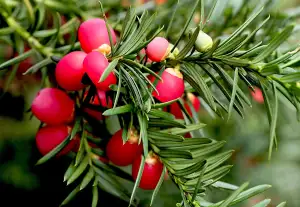Mastering the Art of Rhubarb Harvesting: When is the Best Time to Harvest Rhubarb at Home?

Understanding Rhubarb Harvesting:
Rhubarb is a perennial vegetable that is harvested for its tart stalks, commonly used in pies, jams, and sauces. It thrives in cooler climates and is typically ready for harvesting in the spring through early summer. The plant requires well-drained soil and plenty of sunlight to grow successfully. Rhubarb stalks should be firm and crisp when harvested, with leaves that are toxic if ingested due to high levels of oxalic acid. Regular harvesting promotes continuous growth throughout the season.
Ideal Timing for Harvesting Rhubarb:
The ideal time to harvest rhubarb is in the late spring to early summer months, typically from April to June. It is recommended to wait until the second year after planting before harvesting any stalks. This allows the plant to establish strong roots and ensures a bountiful harvest in the following years. Harvesting should be done when the stalks are firm, thick, and have reached a height of about 10-15 inches. Avoid harvesting rhubarb during hot summer months as the stalks may become tough and less flavorful.
Signs of Rhubarb Readiness:
When it comes to determining if your rhubarb is ready for harvest, there are a few key signs to look out for. The stalks should be thick and firm, with vibrant coloration. Avoid harvesting any stalks that are thin or floppy, as these indicate immaturity. Additionally, the leaves should be fully unfurled and healthy-looking. Remember that rhubarb is typically ready to be harvested in late spring to early summer, depending on your climate. By paying attention to these signs of readiness, you can ensure a bountiful and flavorful harvest of rhubarb from your garden.
Harvesting Techniques for Rhubarb:
Harvesting rhubarb is a straightforward process that requires some care to ensure a bountiful yield. To harvest rhubarb, grasp the stalk near the base and pull gently while slightly twisting it to detach from the plant. Avoid cutting the stalks as this can leave behind a stub that may invite disease. It's important to only harvest mature stalks that are at least 10-15 inches long. Be sure to leave a few stalks on the plant to support its growth for the next season.
Storing Freshly Harvested Rhubarb:
After harvesting rhubarb, it is crucial to store it properly to maintain its freshness. To store freshly harvested rhubarb, start by removing any leaves attached to the stalks as they can drain moisture and nutrients. Next, wash the stalks thoroughly and allow them to dry completely. Trim the ends of the stalks and cut them into smaller pieces if desired.
For short-term storage, place the rhubarb in a plastic bag or wrap it in a damp paper towel before storing it in the refrigerator. Rhubarb can be stored in the refrigerator for up to two weeks this way. If you want to store rhubarb for a longer period, consider freezing it. To freeze rhubarb, blanch the stalks in boiling water for 1-2 minutes, then transfer them to an ice bath before draining and packaging them in airtight containers or freezer bags.
Properly stored rhubarb can be enjoyed in various dishes like pies, jams, and sauces even after the harvesting season has ended.
Published: 08. 03. 2024
Category: Home



